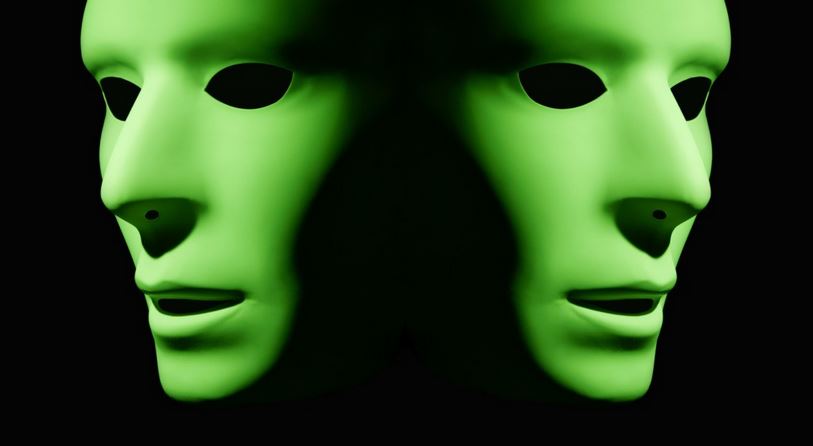
by Fr. Seraphim Rose
The concept of prelest, a key one in Orthodox ascetical teaching, is completely absent in the Protestant-Catholic world which produced the “charismatic” movement; and this fact explains why such an obvious deception can gain such a hold over nominally “Christian” circles, and also why a “prophet” like Nicholas Berdyaev who comes from an Orthodox background should regard it as absolutely essential that in the “new age of the Holy Spirit”
“There will be no more of the ascetic world-view.”
The reason is obvious: the Orthodox ascetic world-view gives the only means by which men, having received the Holy Spirit at their Baptism and Chrismation, may truly continue to acquire the Holy Spirit in their lives; and it teaches how to distinguish and guard oneself against spiritual deception. The “new spirituality” of which Berdyaev dreamed and which the “charismatic revival” actually practices, has an entirely different foundation and is seen to be a fraud in the light of the Orthodox ascetical teaching. Therefore, there is not room for both conceptions in the same spiritual universe: to accept the “new spirituality” of the “charismatic revival” one must reject Orthodox Christianity; and conversely, to remain an Orthodox Christian, one must reject the “charismatic revival,” which is a counterfeit of Orthodoxy.
To make this quite clear, in what follows we shall give the teaching of the Orthodox Church on spiritual deception chiefly as found in the 19th-century summation of this teaching made by Bishop Ignatius Brianchaninov, himself an Orthodox Father of modern times, in volume one of his collected works.
 There are two basic forms of prelest or spiritual deception. The first and more spectacular form occurs when a person strives for a high spiritual state or spiritual visions without having been purified of passions and relying on his own judgment. To such a one the devil grants great “visions.” There are many such examples in the Lives of Saints, one of the primary textbooks of Orthodox ascetical teaching. Thus St. Nicetas, Bishop of Novgorod (Jan. 31), entered on the solitary life unprepared and against the counsel of his abbot, and soon he heard a voice praying with him.
There are two basic forms of prelest or spiritual deception. The first and more spectacular form occurs when a person strives for a high spiritual state or spiritual visions without having been purified of passions and relying on his own judgment. To such a one the devil grants great “visions.” There are many such examples in the Lives of Saints, one of the primary textbooks of Orthodox ascetical teaching. Thus St. Nicetas, Bishop of Novgorod (Jan. 31), entered on the solitary life unprepared and against the counsel of his abbot, and soon he heard a voice praying with him.
Then “the Lord” spoke to him and sent an “angel” to pray in his place and to instruct him to read books instead of praying, and to teach those who came to him. This he did, always seeing the “angel” near him praying, and the people were astonished at his spiritual wisdom and the “gifts of the Holy Spirit” which he seemed to possess, including “prophecies” which were always fulfilled. The deceit was uncovered only when the fathers of the monastery found out about his aversion for the New Testament (although the Old Testament, which he had never read, he could quote by heart), and by their prayers he was brought to repentance, his “miracles” ceased, and later he attained to genuine sanctity.
Again, St. Isaac of the Kiev Caves (Feb. 14) saw a great light and “Christ” appeared to him with “angels”; when Isaac, without making the sign of the Cross, bowed down before “Christ,” the demons gained power over him and, after dancing wildly with him, left him all but dead. He also later attained genuine sanctity.
There are many similar cases when “Christ” and “angels” appeared to ascetics and granted astonishing powers and “gifts of the Holy Spirit,” which often led the deluded ascetic finally to insanity or suicide.
But there is another more common, less spectacular form of spiritual deception, which offers to its victims not great visions but just exalted “religious feelings.” This occurs, as Bishop Ignatius has written,
“when the heart desires and strives for the enjoyment of holy and divine feelings while it is still completely unfit for them. Everyone who does not have a contrite spirit, who recognizes any kind of merit or worth in himself, who does not hold unwaveringly the teaching of the Orthodox Church but on some tradition or other has thought out his own arbitrary judgment or has followed a non-Orthodox teaching – is in this state of deception.”
The Roman Catholic Church has whole spiritual manuals written by people in this state; such is Thomas a Kempis’ Imitation of Christ.
Bishop Ignatius says of it:
“There reigns in this book and breathes from its pages the unction of the evil spirit, flattering the reader, intoxicating him… The book conducts the reader directly to communion with God, without previous purification by repentance… From it carnal people enter into rapture from a delight and intoxication attained without difficulty, without self-renunciation, without repentance, without crucifixion of the flesh with its passions and desires (Gal. 5:24), with flattery of their fallen state.”
And the result, as I.M. Kontzevitch, the great transmitter of patristic teaching, has written, is that
“the ascetic, striving to kindle in his heart love for God while neglecting repentance, exerts himself to attain a feeling of delight, of ecstasy, and as a result he attains precisely the opposite: ‘he enters into communion with satan and becomes infected with hatred for the Holy Spirit’ (Bishop Ignatius).”
And this is the actual state in which the followers of the “charismatic revival,” even without suspecting it, find themselves. This may be seen most clearly by examining their experiences and views, point by point, against the teaching of the Orthodox Fathers as set forth by Bishop Ignatius.
